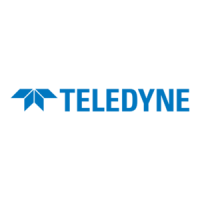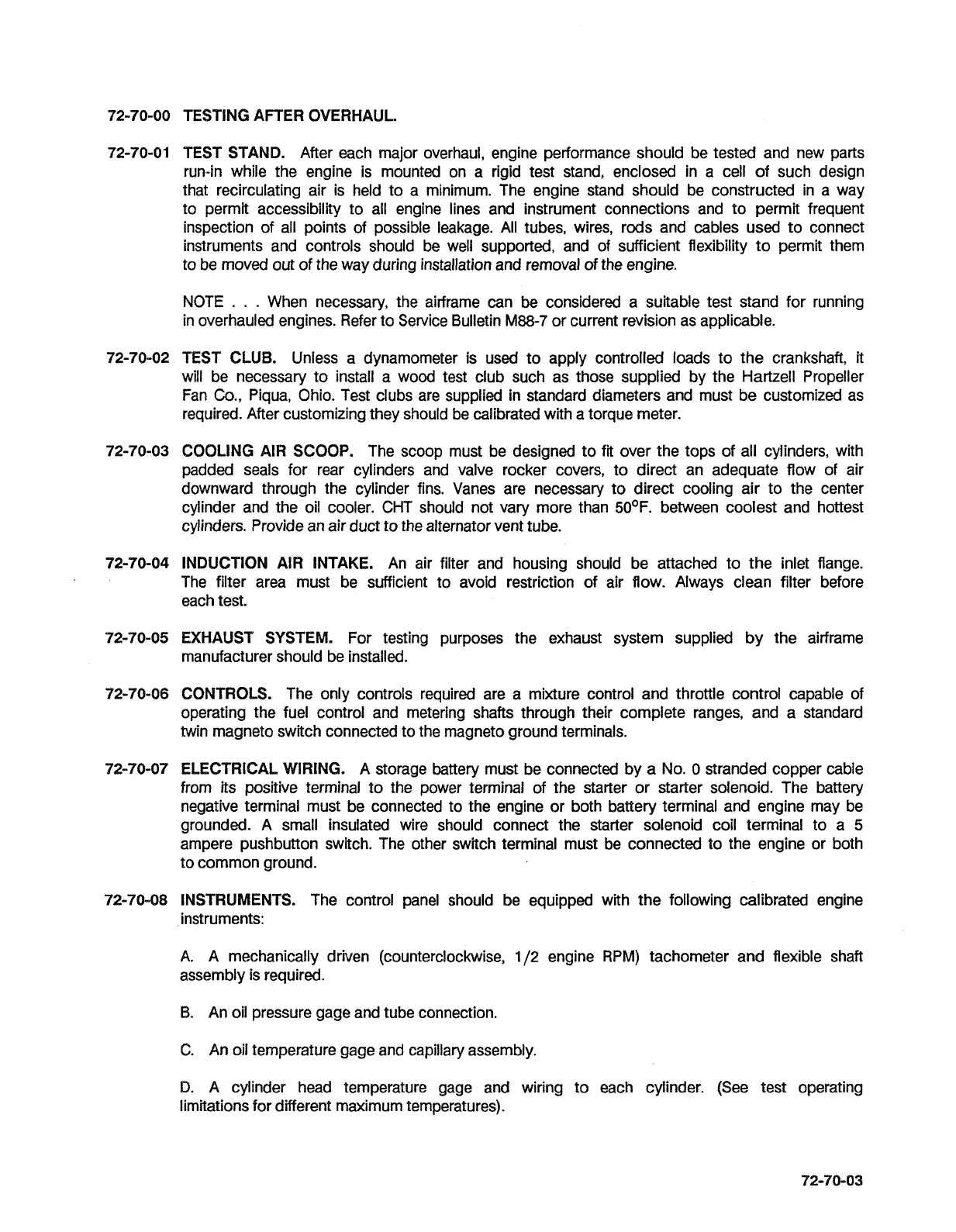72-70-00 TESTING AFTER OVERHAUL.
72-70-01 TEST STAND.
After each major overhaul, engine performance should be tested and new parts
run-in while the engine is mounted on a rigid test stand, enclosed in a cell of such design
that recirculating air is held to a minimum. The engine stand should be constructed in a way
to permit accessibility to all engine lines and instrument connections and to permit frequent
inspection of all points of possible leakage. All tubes, wires, rods and cables used to connect
instruments and controls should be well supported, and of sufficient flexibility to permit them
to be moved out of the way during installation and removal of the engine.
NOTE
.
.
.
When necessary, the airframe can be considered a suitable test stand for running
in overhauled engines. Refer to Service Bulletin
M88-7
or current revision as applicable.
72-70-02 TEST CLUB.
Unless a dynamometer is used to apply controlled loads to the crankshaft,
it
will be necessary to install a wood test dub such as those supplied by the Hartzell Propeller
Fan Co.,
Piqua, Ohio. Test clubs are supplied in standard diameters and must be customized as
required. After customizing they should be calibrated with a torque meter.
72-70-03 COOLING AIR SCOOP.
The scoop must be designed to
fit
over the tops of all cylinders, with
padded seals for rear cylinders and valve rocker covers, to direct an adequate flow of air
downward through the cylinder fins. Vanes are necessary to direct cooling air to the center
cylinder and the oil cooler. CHT should not vary more than
50°F. beween coolest and hottest
cylinders. Provide an air duct to the alternator vent tube.
72-70-04 INDUCTION AIR INTAKE.
An air filter and housing should be attached to the inlet flange.
The filter area must be sufficient to avoid restriction of air flow. Always clean filter before
each test.
72-70-05 EXHAUST SYSTEM.
For testing purposes the exhaust system supplied by the airframe
manufacturer should be installed.
72-70-06 CONTROLS.
The only controls required are a mixture control and throttle control capable of
operating the fuel control and metering shafts through their complete ranges, and a standard
twin magneto switch connected to the magneto ground terminals.
72-70-07 ELECTRICAL WIRING.
A storage battery must be connected by a No. 0 stranded copper cable
from its positive terminal to the power terminal of the starter or starter solenoid. The battery
negative terminal must be connected to the engine
or both battery terminal and engine may be
grounded.
A
small insulated wire should connect the starter solenoid coil terminal to a 5
ampere pushbutton switch. The other switch terminal must be connected to the engine or both
to common ground.
72-70-08 INSTRUMENTS.
The control panel should be equipped with the following calibrated engine
instruments:
A.
A mechanically driven (counterclockwise,
1/2
engine RPM) tachometer and flexible shaft
assembly is required.
B. An oil pressure gage and tube connection.
C.
An oil temperature gage and capillary assembly.
D.
A
cylinder head temperature gage and wiring to each cylinder. (See test operating
limitations for different maximum temperatures).

